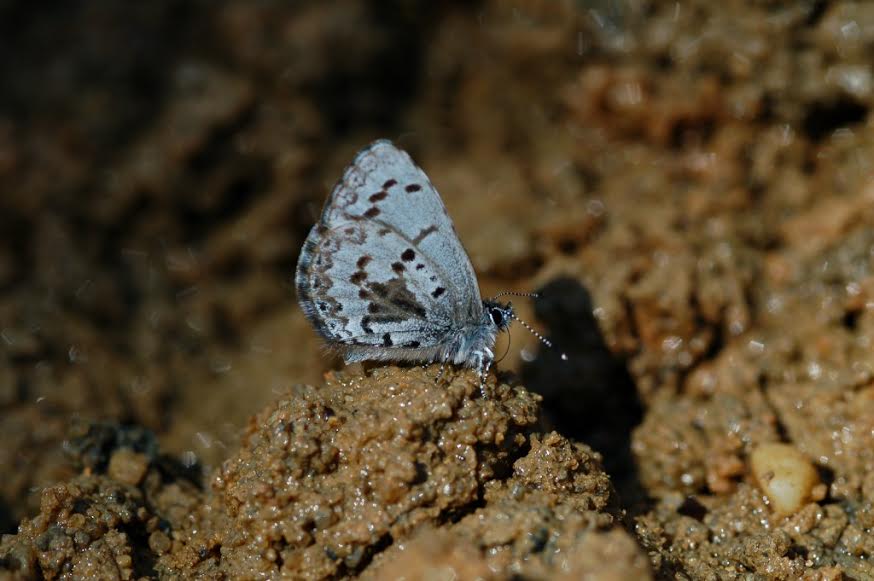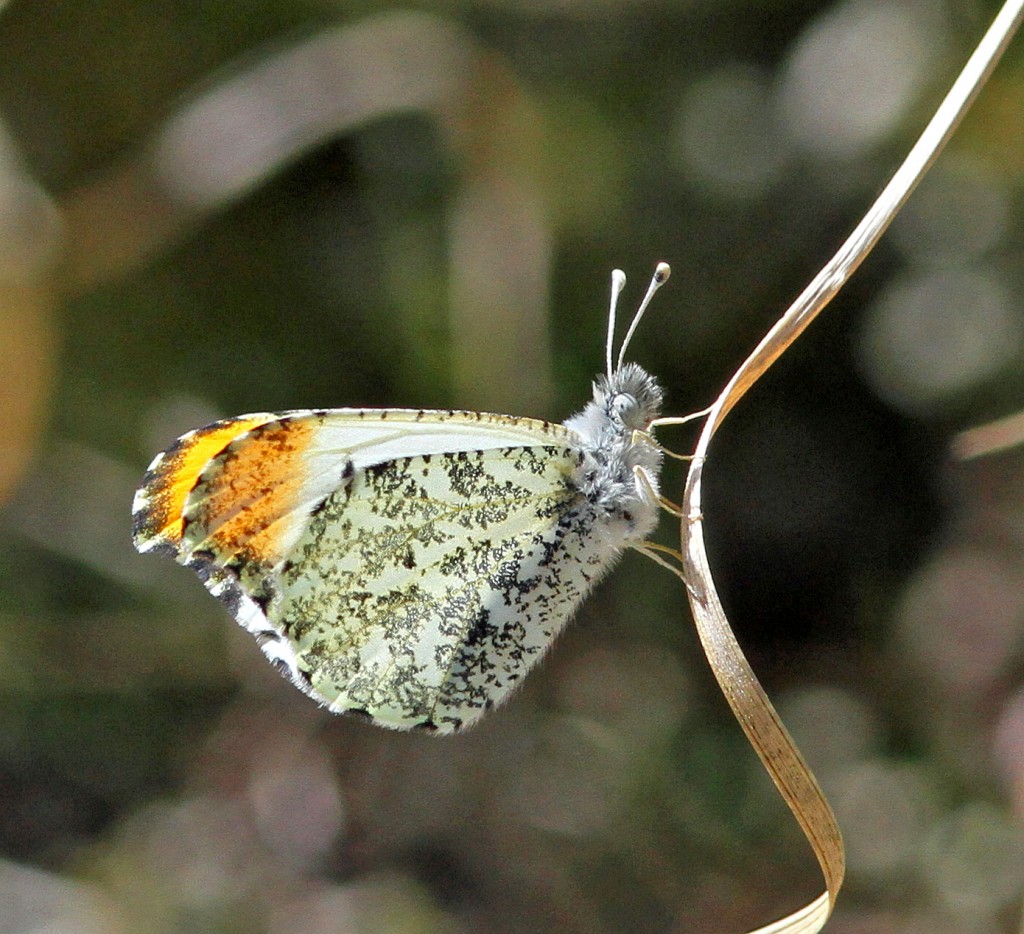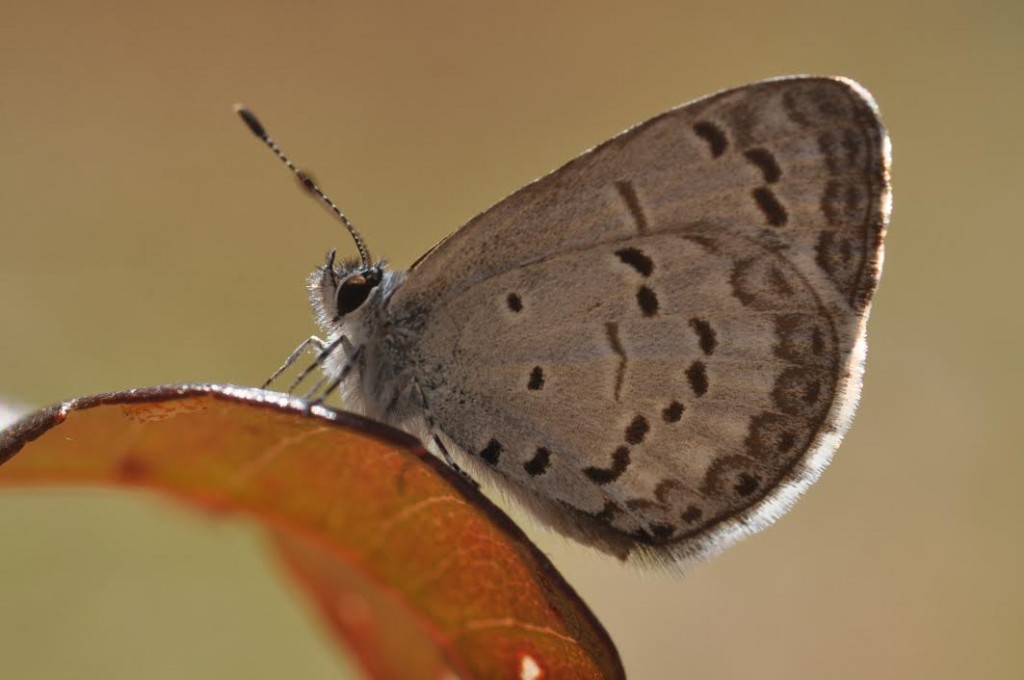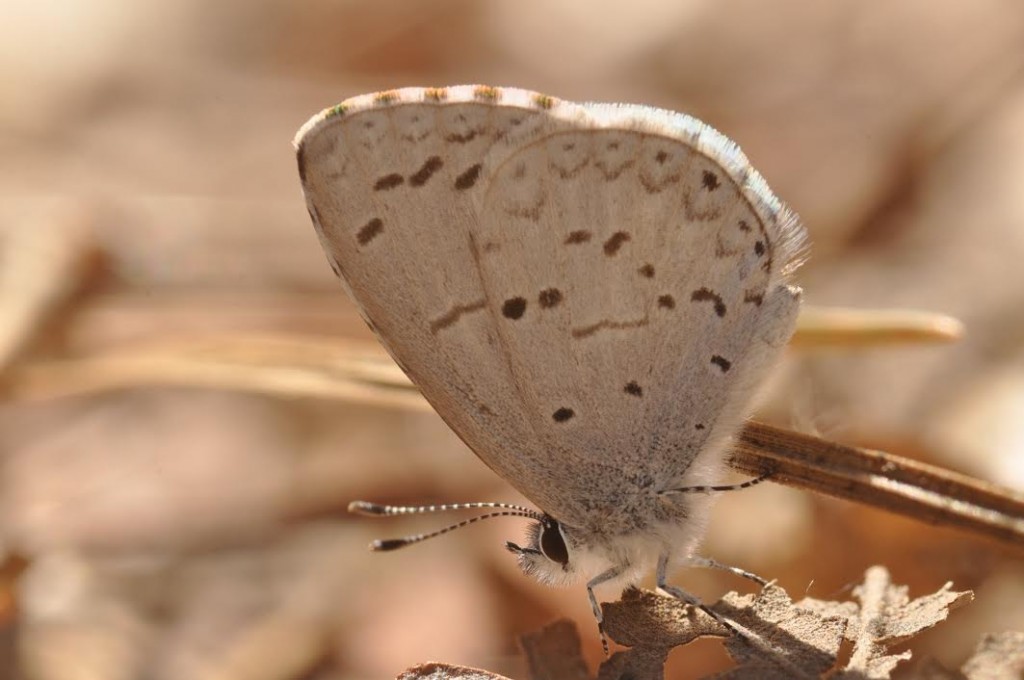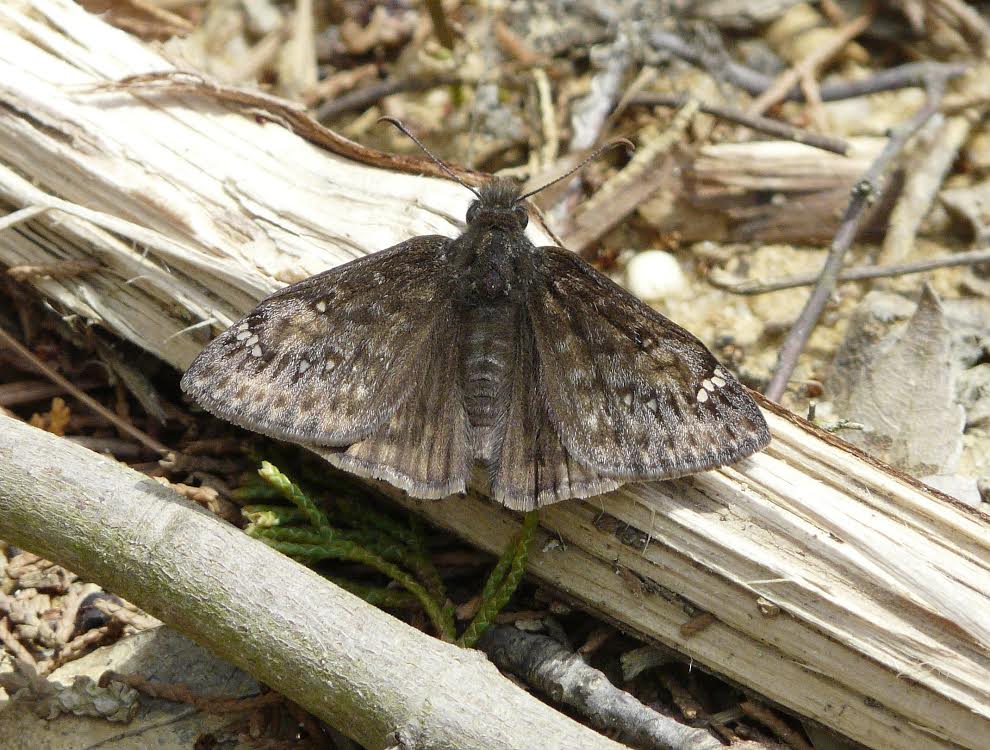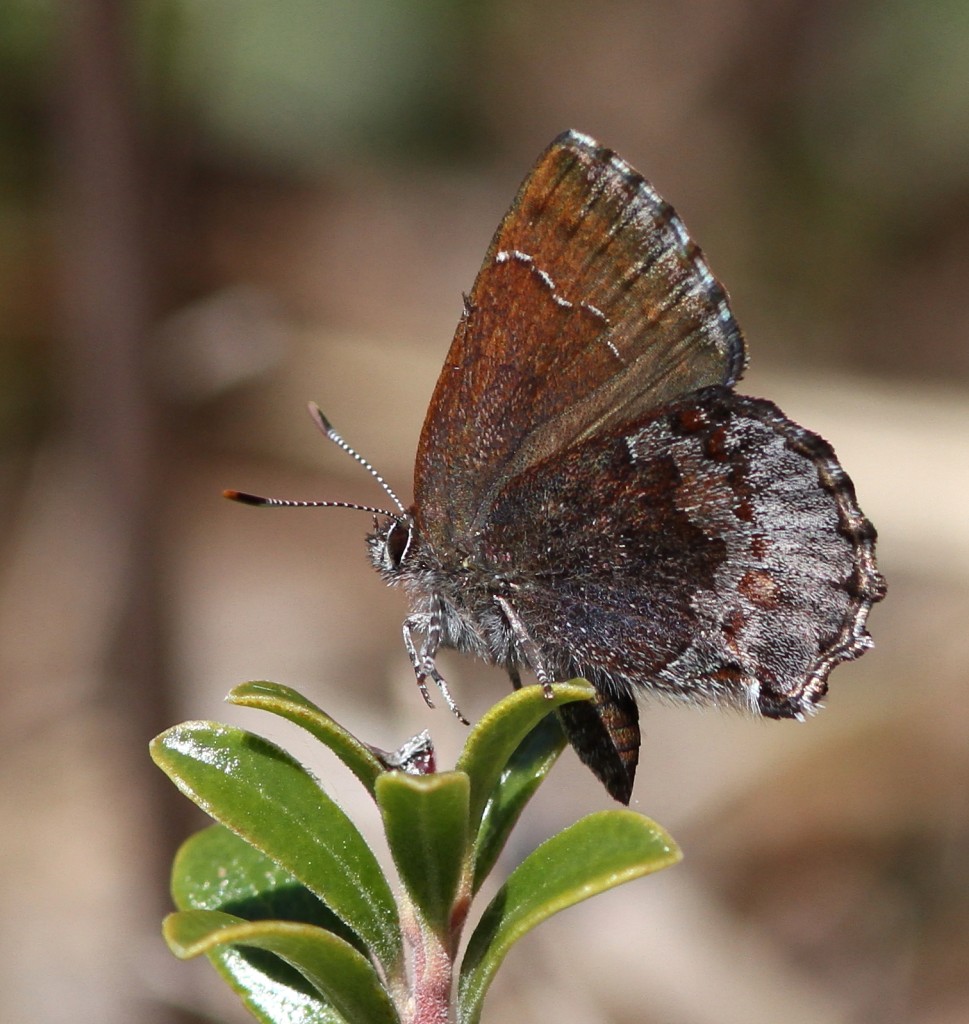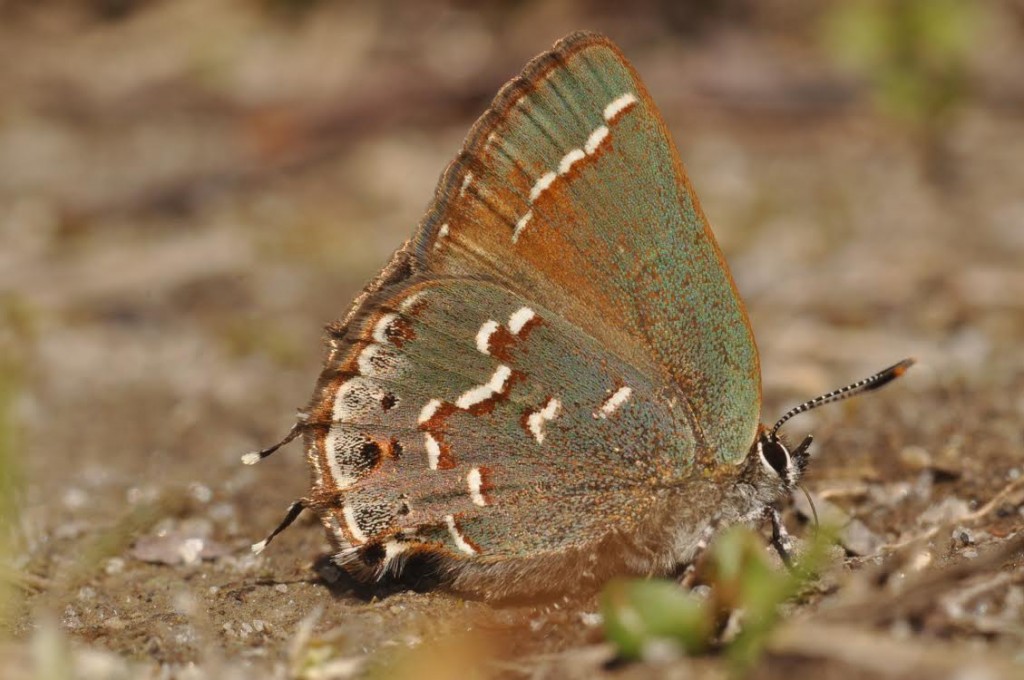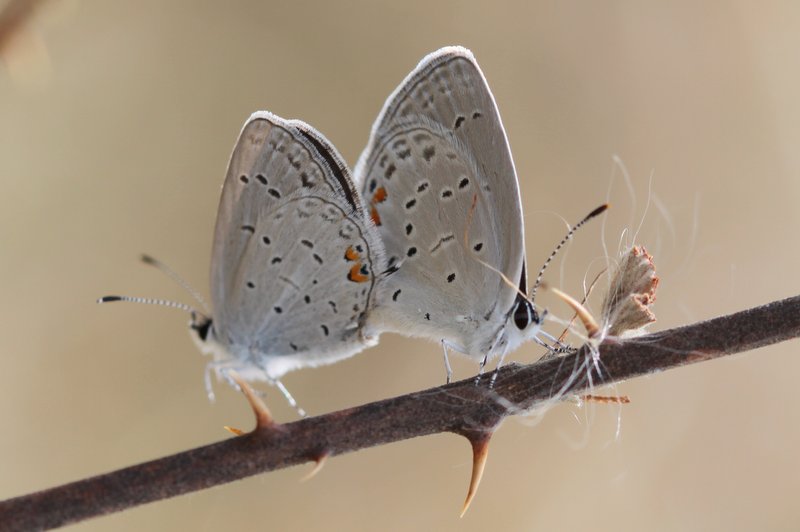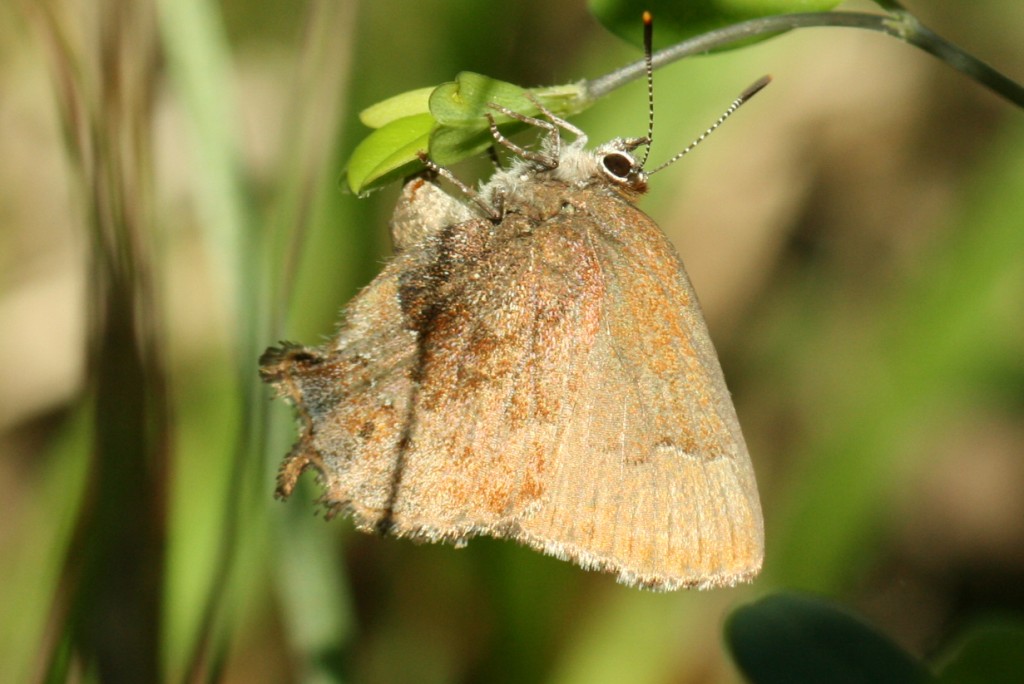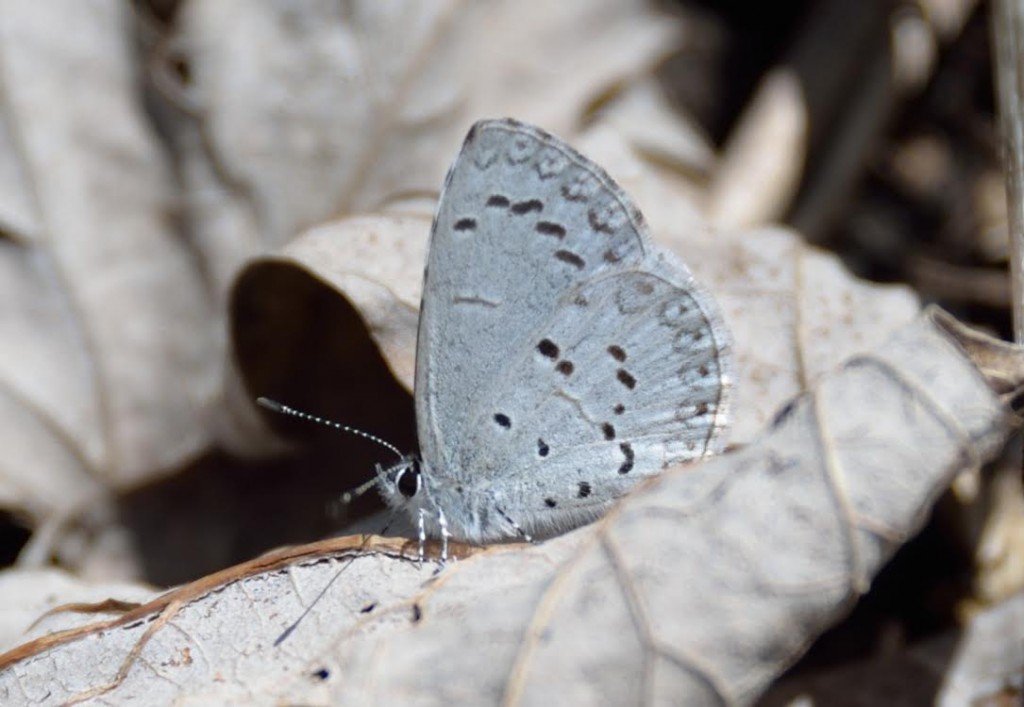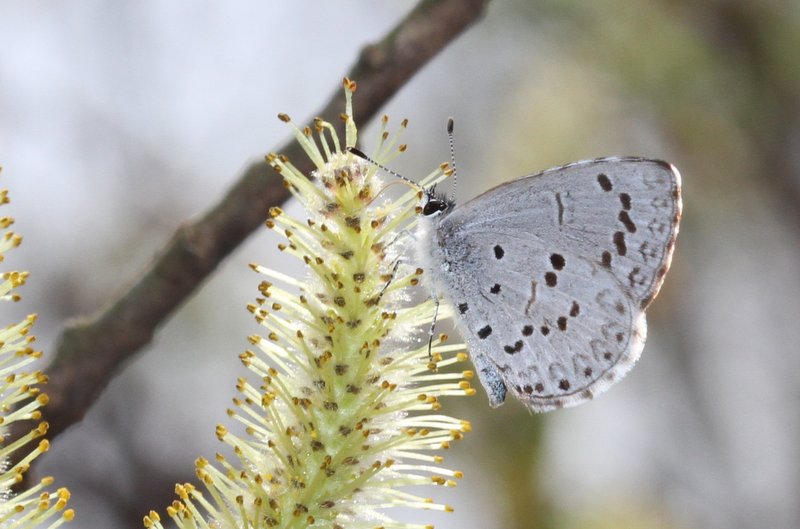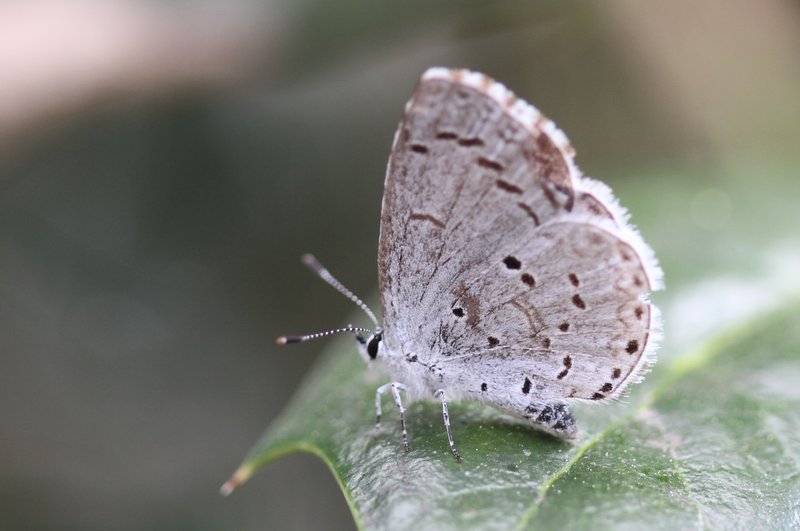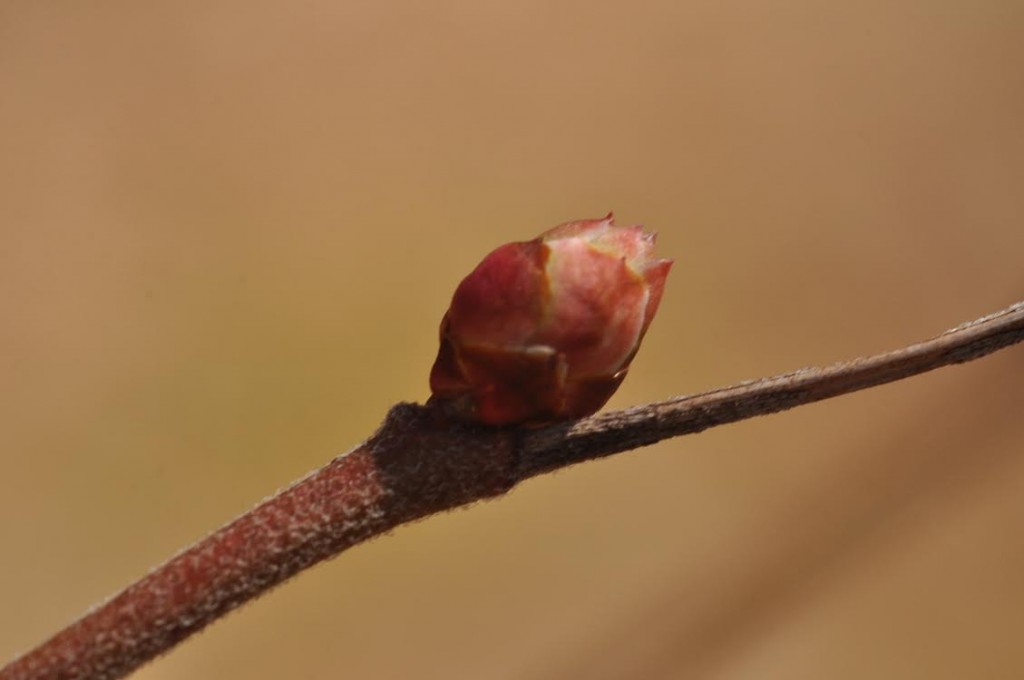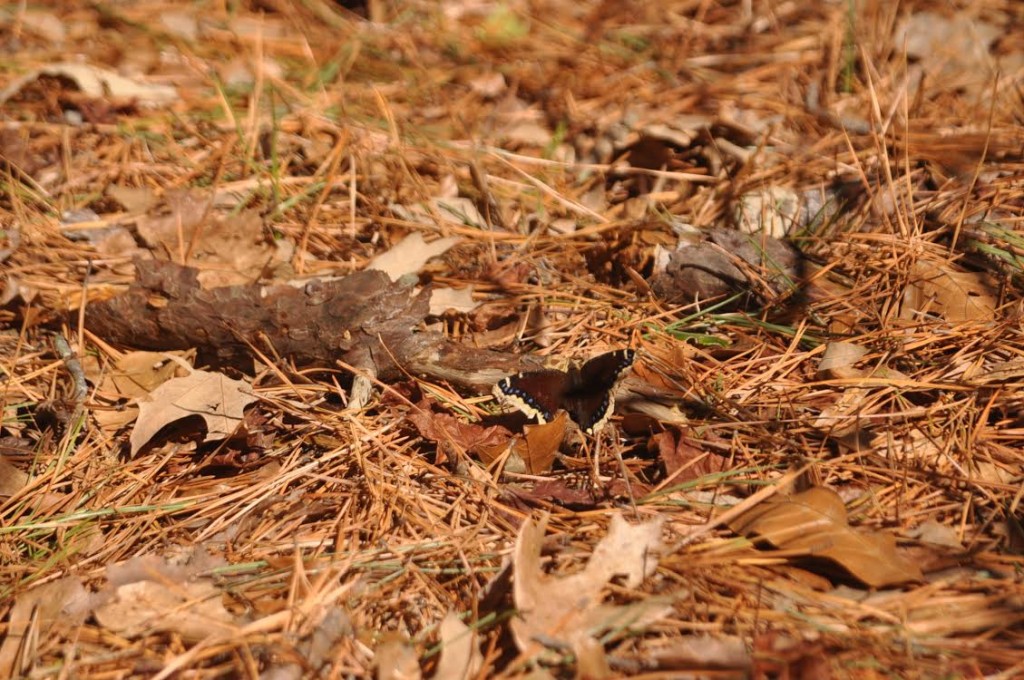
Identifying azures like this one used to be easy in southern NJ. That’s not the case now. (Photo by Pat Sutton of blueberry azure on April 3 on Old Robbins Trail.)
Look out, everyone! Trouble ahead!
The weather report for today, tomorrow, and the weekend looks good for butterflies — with sunny skies and temperatures crossing into the 70s. Even more little blue butterflies should be flashing around here and there.
Thirty years ago, we could have called them all spring azures (Celastrina ladon) and assumed we were correct. Nowadays, it’s nowhere near that simple.
Thanks to the work of David Wright, Harry Pavulaan, and others, following the work of A.M. Shapiro and others, we now have a far more complicated situation than in the pre-1990s. In our area alone, the Coastal Plain of NJ, we have at least four different species of azure butterflies to chase and to chart. Calling the butterfly above a “spring azure” can feel unsatisfying now — something like writing down “accipiter, sp.” after a hawk flap-flap-glides by you.
The four azures in spring in South Jersey, in approximate order of ID difficulty (and perhaps also in order of abundance?), are:
blueberry azure (Celastrina lucia, a.k.a. Celastrina ladon lucia)
holly azure (C. idella)
summer azure in spring form (C. neglecta)
Edward’s azure (C. ladon)
The first two are certainly the most common of the group in our area in spring, and so the most pressing and most frequent complexity is the challenge of separating those two. The former have been flying this year since April 1; the latter should be flying soon.
Here’s a post from April 2011 that was an attempt to summarize the differences between those two species — featuring three helpful photos by Dave Amadio of a “textbook” holly:
Here comes a challenge: holly azures are flying
The extra problem within blueberry vs. holly involve the various forms of each, especially form “violaceae” of the blueberry azure, the lightest form of that species, as that can suggest a holly azure. Are hollies always just a touch brighter and cleaner? (Click “Leave a Reply” to chip in your thoughts.)

Blueberry azure, “violaceae” form, photo’d by Will Kerling, Beaver Dam Road, (CMY) 4-2-14.
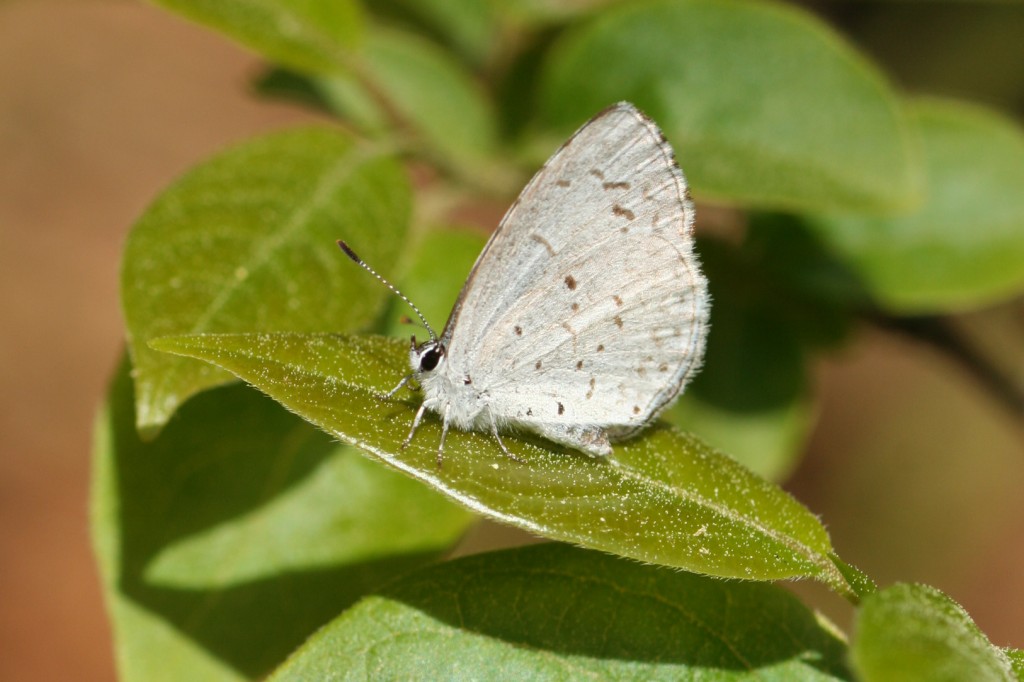
Holly azure (apparently) on Old Port Road (ATL), 5-13-2011.
To make things even more difficult, we have the two rarer species, both tough to ID, the spring form of summer azure and Edward’s azure.
Will Kerling just recorded our first summer azure (spring form) for 2014, and his ID has been confirmed by David Wright.
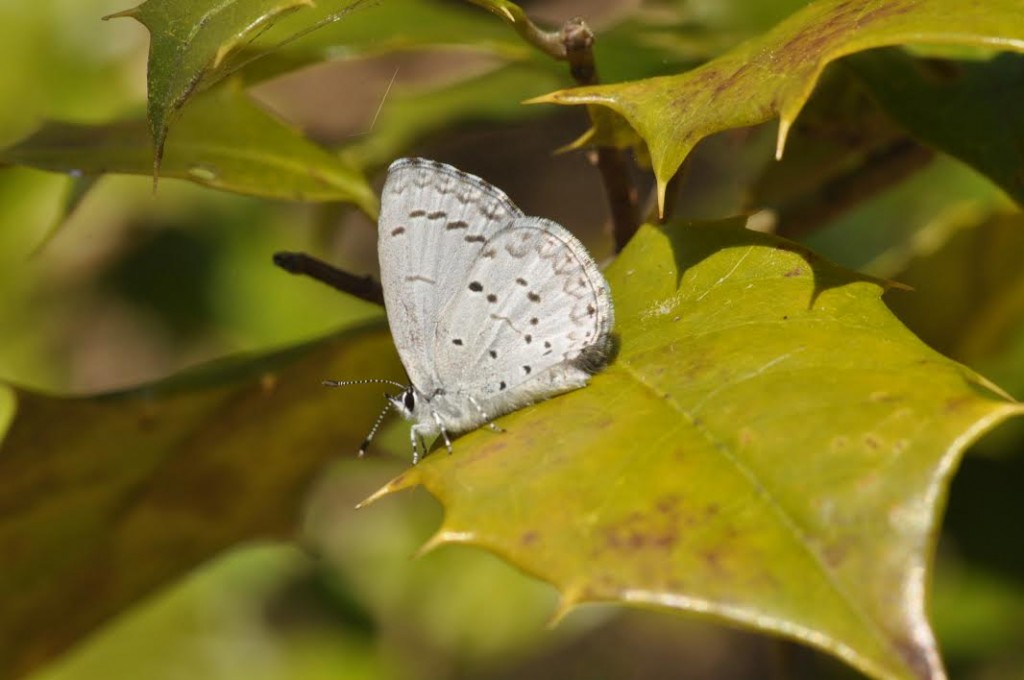
Female summer azure, spring form, photo’d by Will Kerling on Woodcock Trail (CMY) 4-9-14.
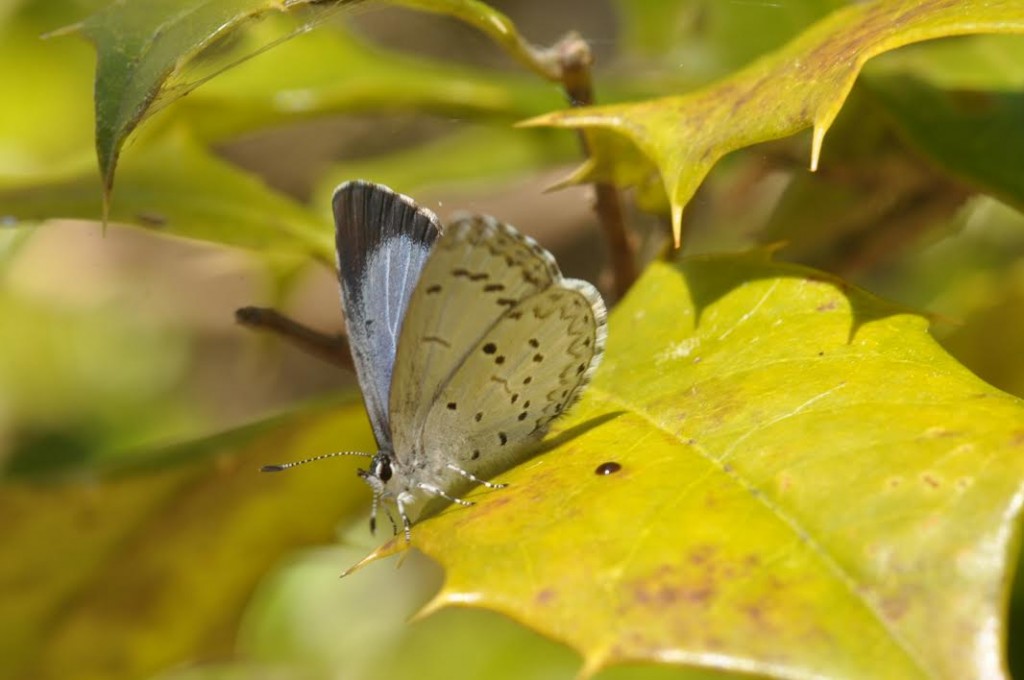
Same individual as above, showing upper side of wings, female summer azure (C. neglecta) spring form, photo’d by Will Kerling 4-9-14.
Finally, here’s Will’s photo of Edward’s from three years ago, the rarest member of the complex in South Jersey (apparently):
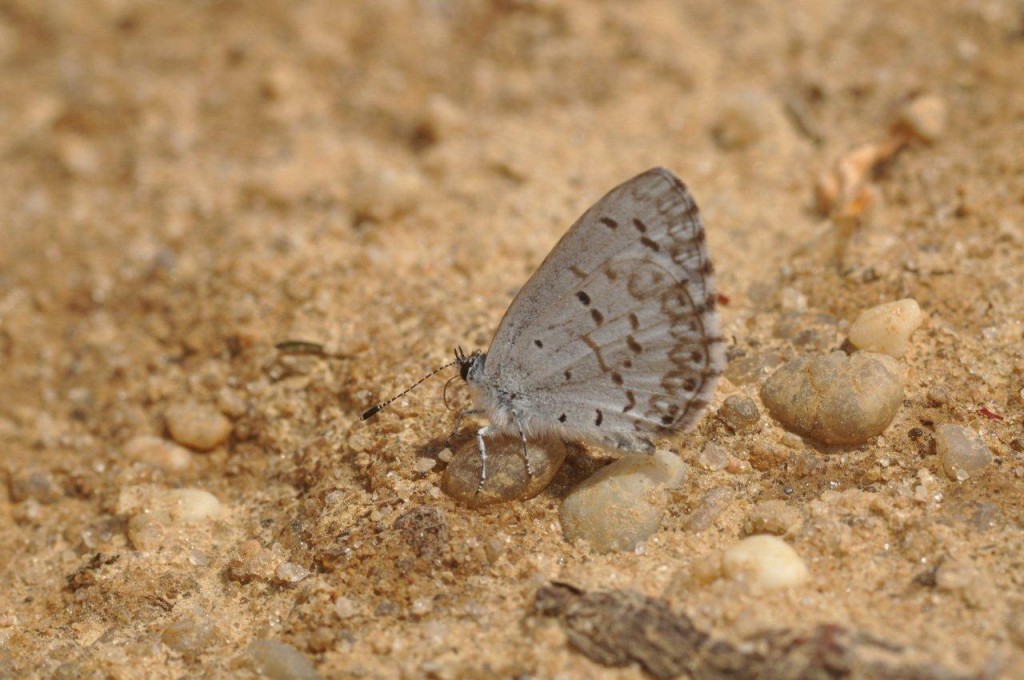
Edward’s azure, C. ladon, photo’d by Will Kerling, Lizard Tail Swamp Preserve (CMY Co), 4-19-2011.
Whew! It’s tough to separate these look-alike creatures!
Wright & Pavulaan’s landmark article (see link below) naming Celastrina idella, the holly azure, as a new species, provides many useful details on the whole group.
Among other good things, they mapped the then-documented ranges for C. lucia, C. idella, and C. ladon by counties (hand-written labels added).



Sources for more information:
Pavulaan and Wright’s 1999 paper describing C. idella, the holly azure
Cech & Tudor’s Butterflies Of The East Coast has an excellent overview of the various problems and sibling species (or forms) of the azures. See especially “The Celastrina ladon Complex — Complex Indeed,” page 139.
Gochfeld & Burger’s Butterflies of New Jersey also provides an excellent overview, with a focus on NJ, pages 167-172.
If your collection of American Butterflies goes back to 1995, see David Wright’s “The American Azures: Our Blue Heaven” 3(1) 20-28, for very helpful maps, a history of the splits, and many other helpful details.
Last Words…for now
I’ll close with a repeat from the old post from April 2011 with the same words of wisdom listed there:
Paul Opler & G.O. Krizek, Butterflies East Of The Great Plains (1984) “In recent years, it has been realized that several sibling species are involved [under the name spring azure]. Seasonal and geographic variation confuses matters.”
J.P. Brock & K. Kaufman, Butterflies Of North America (2003), “It now appears certain that there are several species, all very similar. Their classification is still being studied. Unless you are a specialist on this group or have access to detailed information for your local area, it may just be best to enjoy them as azures — and marvel at the fact that butterflies can still keep so many secrets from us.”
Rich Cech & Guy Tudor, Butterflies Of The East Coast (2005), “We may be, simply enough, witnessing the fragmentation of an ancestral species.”
David Wright in an email to our group (2009), “Study what’s at hand and take lots of photos. Eventually, it begins to make sense.”
Comments Welcome:
Anyone with suggestions, corrections, questions, tips, further details, or other info is invited to leave a comment here.
Keep exploring, everyone!
jc
